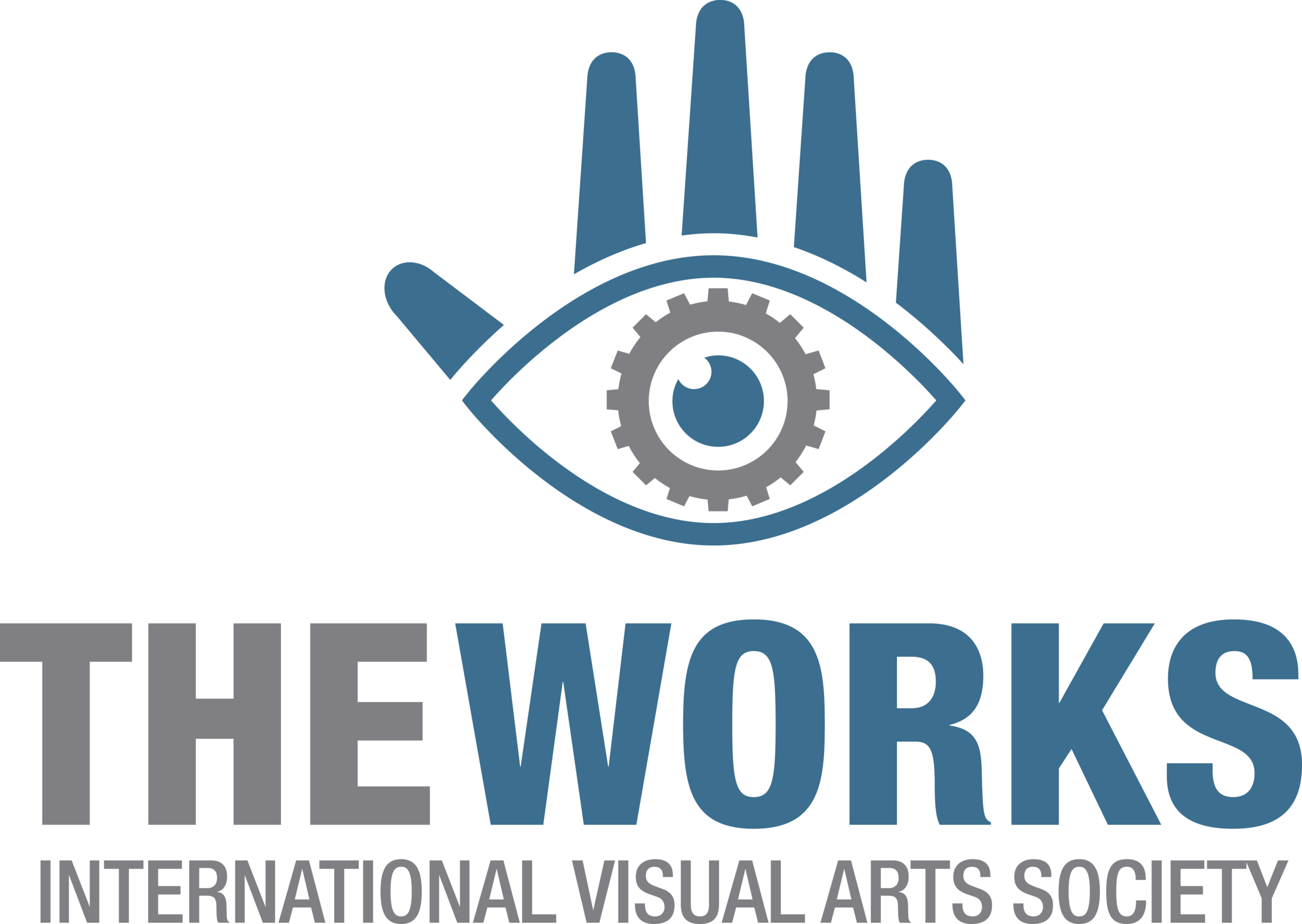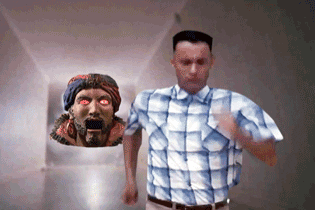TC: Yeah, it’s a lot of what’s on my feed, and I think that I somewhat subconsciously replicated that, but yeah, it’s what I like to see in my feed.
W: Why do you think you like it so much? What speaks to you about it?
TC: Well, when I think about the writing that comes up on my feed, I think about writers such as Clementine Morrigan, I think about a lot of astrologers on Instagram—I am a completely uncertified astrologer on the side. I feel like having writing in addition to photos and other visual stimuli—there's something grounding about it. I don’t know. There’s something more honest about having writing on Instagram, cause I know that a lot of people are sometimes aimlessly scrolling, and you’re kind of being inundated with all this stuff. But there is sometimes some stuff that hits. I wanted to be able to have what some of the artist wrote be that for somebody else, you know? We need to be communicating directly or indirectly, especially now.
W: Throughout your takeover, art is used as a medium to interrogate systems of oppression, as seen in Anna Boateng’s essays on misogynoir and transmisogynoir. Art is also deployed as the message of just futures itself, as seen in Ochi Oloo’s citation of Malcolm X: “[a] race of people is like an individual man; until it uses its own talent, takes pride in its own history, expresses its own culture, affirms its own selfhood, it can never fulfill itself.” What role do you think art should play in these futures?
TC: I really have to think about the question. I think that art is constantly a reflection and usually a very progressive reflection. I feel like most movements—like, revolutionary movements—have a very prominent art component. And art is what creates resilience and keeps us alive. Like, we sang our way here. I feel like in terms of just futures for artists with the pandemic and COVID, I think rest and a stronger spiritual practice, whatever that may be, is something I’m hearing a lot of artists talking about. And letting go of the idea of being lazy, especially because that is constantly put onto Black people as a stereotype. But actually sinking into that rest, knowing that it’s important and there’s not necessarily something that you can figure out, because as an artist, you are a spiritual conduit. It’ll come to you.
I think as we step into these more just futures, there is a need for stronger representation, and not representation that is dictated by the white gaze or the white dollar, but stories that center joy in Black resilience. I feel as though art should reflect that, because that representation is so important and representation can also help you imagine something. I look to Afrofuturism often and I think that a lot of what is before us was imagined, so you can imagine a brighter future for ourselves for sure. Those are principles quoted from Adrienne Maree Brown; those aren’t really my words.
The future I imagine is art being the platform for that imagination and propelling us forward, and creating representation that actually is a reflection. And there’s such a void of Black Canadian narratives being told. There’s so much room for the nuances of Blackness that deserve to be told.
W: In addition to sharing cross-disciplinary art and writing, your curatorial takeover has a designed and cohesive visual presence. What was your process behind the takeover’s visual cohesiveness?
TC: I just offered it if [the artists] wanted it, if they wanted that support. I was very upfront about it and I was very happy to do it because I feel so lucky to be doing this work. I don’t know how I define myself; I guess I’m an arts administrator and worker. I really have a hard time finding a title—I guess a facilitator. That’s what I’ve been using. But my own artistic practice is more so a decompressive thing. It’s not really something that I am turning a profit on yet or making it creative. But my career is the facilitation of putting on Black artists. I feel so lucky to be working with any of the artists I worked with. Like, I don’t feel necessarily a possessive ownership, but the success of any of these artists that I work with or will work with brings me so much joy. I think having the visual element was to bring it all together. I want to give them the support where they need it to, I don’t know, turn it out. I want to give them the best space to do the best things.
W: Were you designing elements of it then?
TC: Yeah, for like the text and that kind of thing. Merlin, for example, did basically everything, except for the initial artist bio video that I shared. But yeah, for the other artists for the texts and putting things together, I assembled some things just so it was cohesive.
W: I think it’s very effective and it looks really good also. Very dynamic as well, in terms of subtle nuance between all of the artists where you can see that overarching design element, but then where other people are doing their own thing.
TC: Yeah, I don’t know how much credit I can necessarily take for that. Every artist put a lot of work into each takeover by simply sharing with an audience, and I think it’s something I’ve taken for granted with artists; like, it’s very vulnerable to share that kind of work, and they all brought something completely different to the table. But then it was cohesive because we brought it together that way.
I’m experimenting with a different format for this upcoming [takeover] because it’s kind of going to be in constant evolution. I look forward to seeing how it evolves over time. I get very in my head about it sometimes, but it’s also just an Instagram takeover, but Instagram’s an amazing platform! I think we often spend a lot of time on it, so it’s vilified, but I don’t think that can reduce the reach that it has and the medium for connection that it’s created in this time. I’m really excited to see how it evolves and changes with the times as well.
W: I think it has such a hold on how we consume information in both leisurely aspects, but then also in more vital, politically motivated aspects. It’s a significant format with which to be sharing art.
TC: Yeah, and I think that a lot’s going to come out of the pandemic as well in terms of accessibility. I feel like people are getting more websites developed and there’s less happening on Zoom and more happening on other platforms. And I imagine there’s a lot of software development and tech happening. I look forward to seeing what the next months and years bring in terms of artistic space and changing how we experience art, whether it be visual art, writing, performance. I can’t wait.
W: This leads quite organically into the next question: what, artistically, has been exciting you lately?
TC: Oh, I really like this question, by the way. I would say most consistently—always—and lately as in the last year and a half, is the Yee-Haw Agenda. It means a lot to me. The Yee-Haw Agenda centers Black artists and voices in country music. I’m a ‘Berta Boy, and I feel like the Yee-Haw Agenda speaks to the Black Prairie narrative because Alberta is very cowboy, and there’s this idea that there’s no black people here—but we’re here. The Yee-Haw Agenda spreads far and wide; it doesn’t just center the States. The Yee-Haw Agenda has been a big thing for me for the year and a half, two years that it’s has its little moment.
What else? The apocalypse—the apocalypse is really inspiring me artistically, I’ll say it. I feel like there’s obviously a lot of really exhausting, hard things about it. And I think to be reaping benefits from the pandemic is also a class privilege thing, absolutely. But with the old world falling and having to create anew, that’s a tall order. It’s terrifying but it’s also inspiring, I think.
W: Do you have anything coming up that you’d like to share?
TC: I feel like this plays back to what I am excited about artistically, but I guess I would like to share that there are a lot of up-and-coming Black tattoo artists in Edmonton, and if you are somebody who wants to get tattooed, Black tattoo artists are probably some of the best tattoo artists that you’ll work with. There is a very promising movement of Black tattoo artists here in the city!



































































































































































































































































































































